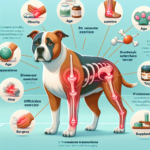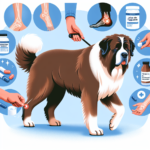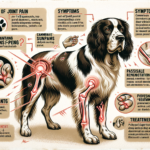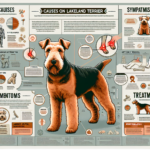Bulldog Joint Pain: Causes, Symptoms, Prevention, and Treatment

Introduction
Bulldogs, known for their distinctive wrinkled faces and stocky builds, have a rich history that dates back to the 13th century in England. Originally bred for bull-baiting, a now-outlawed sport, Bulldogs have since evolved into gentle and affectionate companions. Their unique appearance, characterized by a pushed-in nose, broad shoulders, and muscular frame, makes them easily recognizable and beloved by many.
Despite their endearing qualities, Bulldogs are prone to several health issues due to their unique anatomy. Common concerns include respiratory problems, skin infections, and, notably, joint pain. Understanding and addressing joint health is crucial for Bulldogs, as their physical structure and genetic predispositions make them particularly vulnerable to joint-related issues.
Breed-Specific Joint Pain Risks
Genetic Predisposition
Bulldogs are genetically predisposed to several joint-related issues, including hip dysplasia, elbow dysplasia, and arthritis. Hip dysplasia, a condition where the hip joint doesn’t fit properly into the hip socket, is particularly common in Bulldogs. This genetic condition can lead to pain, lameness, and arthritis over time. Elbow dysplasia, another hereditary condition, involves abnormal development of the elbow joint, causing pain and mobility issues.
Age-Related Risks
As Bulldogs age, the risk of joint pain increases. While joint issues can manifest at any age, they are more prevalent in older Bulldogs. Typically, signs of joint pain may start appearing around the age of five or six. However, due to their genetic predispositions, some Bulldogs may experience joint issues even earlier.
Activity Level and Joint Stress
Bulldogs are not as active as some other breeds, but their stocky build and weight can put significant stress on their joints. Activities that involve jumping or sudden movements can exacerbate joint issues. Additionally, Bulldogs are often prone to obesity, which further increases the strain on their joints, leading to pain and discomfort.
Common Symptoms of Joint Pain in Bulldogs
General Symptoms
- Limping or favoring one leg
- Stiffness, especially after resting
- Reluctance to move or climb stairs
- Decreased activity or playfulness
- Visible discomfort or pain when touched
Breed-Specific Symptoms
In Bulldogs, joint pain may also manifest as a reluctance to engage in activities they once enjoyed, such as short walks or playing with toys. Due to their unique build, Bulldogs may also exhibit a noticeable change in their gait, often appearing more labored or awkward when moving.
When to Consult a Vet
If you notice any of the above symptoms in your Bulldog, it’s essential to consult a veterinarian promptly. Early intervention can help manage the pain and prevent further deterioration of the joints. Regular veterinary check-ups are also crucial for monitoring your Bulldog’s joint health and catching any issues early.
Preventive Measures for Joint Health
Exercise Recommendations
While Bulldogs are not high-energy dogs, regular, moderate exercise is essential for maintaining joint health. Short walks, gentle play sessions, and swimming are excellent low-impact activities that can help keep their joints flexible and muscles strong. Avoid high-impact activities like jumping or running on hard surfaces, as these can exacerbate joint issues.
Dietary Suggestions
A balanced diet rich in essential nutrients can support joint health in Bulldogs. Foods containing glucosamine and chondroitin can help maintain cartilage health, while omega-3 fatty acids have anti-inflammatory properties that can reduce joint pain. Consider incorporating supplements specifically designed for joint health, but always consult your veterinarian before making any dietary changes.
Weight Management
Maintaining a healthy weight is crucial for reducing joint stress in Bulldogs. Obesity can significantly exacerbate joint pain and lead to other health issues. Monitor your Bulldog’s weight closely and adjust their diet and exercise routine as needed to keep them at an optimal weight.
Early Screening and Monitoring
Regular veterinary check-ups and early screening for joint issues can help catch problems before they become severe. X-rays and other diagnostic tools can identify joint abnormalities early, allowing for timely intervention. Discuss with your veterinarian about the best screening schedule for your Bulldog.
Treatment Options for Joint Pain
Non-Surgical Treatments
Non-surgical treatments for joint pain in Bulldogs include medications, physical therapy, and lifestyle adjustments. Anti-inflammatory drugs and pain relievers can help manage pain and reduce inflammation. Physical therapy, including exercises and massages, can improve joint mobility and strength. Lifestyle adjustments, such as providing a comfortable bed and avoiding strenuous activities, can also alleviate joint pain.
Surgical Options
In severe cases, surgical intervention may be necessary to address joint pain in Bulldogs. Common surgical options include hip replacement, arthroscopy, and joint fusion. These surgeries can significantly improve the quality of life for Bulldogs suffering from severe joint pain. However, surgery should be considered only after exploring all non-surgical options and consulting with a veterinary specialist.
Alternative Therapies
Alternative therapies such as acupuncture, hydrotherapy, and massage can also benefit Bulldogs with joint pain. Acupuncture can help reduce pain and inflammation, while hydrotherapy provides low-impact exercise that can strengthen muscles without stressing the joints. Regular massages can improve blood circulation and reduce muscle tension, providing relief from joint pain.
Lifestyle and Management Tips
Daily Care Routine
A consistent daily care routine can help manage and alleviate joint pain in Bulldogs. This routine might include gentle morning walks, a balanced diet with joint supplements, regular physical therapy exercises, and providing a comfortable resting area. Monitoring your Bulldog’s behavior and adjusting the routine as needed can also help manage their joint pain effectively.
Modifying the Home Environment
Making your home more comfortable for a Bulldog with joint pain can significantly improve their quality of life. Consider installing ramps to help them navigate stairs, providing orthopedic beds for better support, and ensuring that their living area is free of obstacles that could cause injury. Soft flooring or rugs can also reduce the impact on their joints when moving around the house.
Long-Term Management
Long-term management of joint pain in Bulldogs involves regular veterinary check-ups, consistent exercise, a balanced diet, and weight management. Keeping a close eye on their behavior and mobility can help you catch any changes early and adjust their care routine accordingly. With proper management, Bulldogs can lead happy and active lives despite joint pain.
FAQs About Bulldogs and Joint Pain
What are the early signs of joint pain in Bulldogs?
Early signs of joint pain in Bulldogs include limping, stiffness, reluctance to move, and decreased activity levels. If you notice any of these symptoms, consult your veterinarian for a thorough examination.
Can joint pain in Bulldogs be prevented?
While genetic predispositions cannot be entirely prevented, maintaining a healthy weight, providing regular low-impact exercise, and ensuring a balanced diet with joint supplements can help reduce the risk of joint pain in Bulldogs.
Are there specific foods that can help with joint health in Bulldogs?
Yes, foods rich in glucosamine, chondroitin, and omega-3 fatty acids can support joint health. Consult your veterinarian for specific dietary recommendations and consider incorporating joint supplements into your Bulldog’s diet.
When should I consider surgery for my Bulldog’s joint pain?
Surgery should be considered when non-surgical treatments are no longer effective, and your Bulldog’s quality of life is significantly impacted by joint pain. Consult with a veterinary specialist to discuss the best surgical options for your Bulldog.
Conclusion
Joint pain is a common issue in Bulldogs due to their genetic predispositions and unique physical structure. Recognizing the symptoms early and taking preventive measures can significantly improve their quality of life. Regular veterinary check-ups, a balanced diet, weight management, and appropriate exercise are crucial for maintaining joint health in Bulldogs. If joint pain becomes severe, various treatment options, including non-surgical and surgical interventions, are available to provide relief. By staying vigilant and proactive, you can help ensure your Bulldog remains happy and active despite joint pain.




